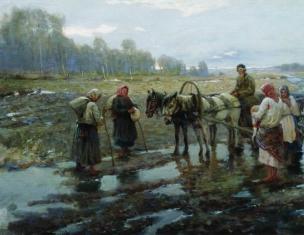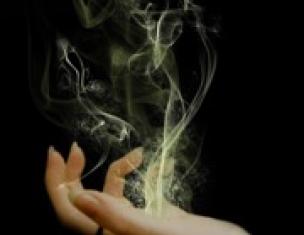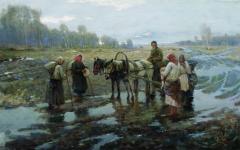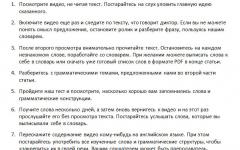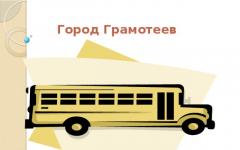Complete sequencing of the genomes of 83 Aboriginal Australians and 25 Papua New Guineans allowed researchers to reconstruct the history of the settlement of this part of the world in space and time. They confirmed that the ancestors of the Australian Aborigines and Papuans of New Guinea separated very early from the ancestors of mainland Eurasia. The authors answer the key question of how many times humanity left Africa - once or twice - with caution. Most of their arguments tip the scales towards the model of one exit, but the researchers do not reject the possibility that there could be two.
In the same issue of Nature as "whole-genome" papers by David Reich's group and the Estonian group, a team led by Professor Eske Willerslev from the Center for GeoGenetics in Copenhagen, Denmark, which also analyzes whole-read genomes, but not different populations around the world, and 83 Australian Aboriginals and 25 Papua New Guineans. This allowed the authors to propose a fairly detailed scheme for the settlement of Sakhul (as they call ancient continent, which until the last glaciation united Australia, New Guinea and Tasmania).
The process of settling Sahul remains one of the most controversial issues in the picture of human exploration of the planet after leaving Africa. Obviously, this region belongs to the most ancient places of residence - according to archaeological evidence, people lived there 47-55 thousand years ago. According to the general opinion of experts, after this they were in long-term isolation, until the late Holocene, when contacts between the population of Sahul and South Asia appeared. Most likely, it was migrations from India that brought the dingo dog and the technology of microliths - miniature stone tools - to Australia.
The problem of the origin of the Australian Aborigines and the Papuans of New Guinea was also studied in the two “whole-genome” works mentioned above. An article by Estonian researchers, reviewed on the website, suggests that although 98% of the ancestors of Australians and Papuans are the same as other non-Africans, 2% of their genome is occupied by the contribution of an earlier migration from Africa, which preceded the main one. But in the article by Reich’s team, which examined a similar number of complete genomes, this hypothesis is not confirmed.
What did it show? targeted research Australo-Papuan genomes by Willerslev's team?
Researchers were able to sequence 83 genomes of Australian Aborigines with 60x coverage (this is high degree reliability). This is a remarkable result because until now there has been very little research on Australian genomes due to Australia's extremely strict rules regarding Aboriginal research. During this work, Professor Willerslev personally visited local tribes to obtain their consent to study DNA samples.
The samples were collected from different regions, taking into account geographical and linguistic diversity. Australian Aboriginal populations are very diverse in language, although all these languages belong to the same Pama-Nyunga family. In the same work, 25 genomes of Papua New Guineans were sequenced (with coverage of 38-53x), samples were also collected geographically and linguistically different groups population. These were supplemented by data from previous studies on the genotyping of Australian Aborigines and Papua New Guineans using single nucleotide polymorphism (SNP) markers.
History of populations
In the genomes studied, the authors found traces of four ancestral sources from four geographical regions: remote - Europe, East Asia and local - Australia and New Guinea. The ratio of these components varies in different regions: somewhere there is more of an autochthonous (local) component, somewhere the influence of migration is higher.
Australian Aborigines and Papuans are genetically closer to each other than to any other people, and this suggests that they descend from a single population that settled Sahul. Signs of the bottleneck effect (a sharp decline in numbers) through which the Australo-Papuan population went through about 50 thousand years ago were found. All Australian Aborigines are the same genetic distance from the Papuans, which indicates their simultaneous separation.
The genomes of Australian Aborigines and Papuans showed a higher proportion of inclusions of ancient Denisovan DNA fragments than other non-African genomes. This suggests a genetic contribution from Denisovans that they received about 43 thousand years ago, and the magnitude of this contribution is estimated at about 4%. The analysis also demonstrated a Neanderthal genetic contribution common to all non-Africans dating back about 60,000 years ago.

The figure shows the authors' proposed scheme for the settlement of Australia and New Guinea. According to this scheme, a branch separated from the migration flow from Africa and reached Sahul, passing through the bottleneck about 50 thousand years ago. About 43 thousand years ago, it received gene flow from the Denisovans (blue arrow). About 37 thousand years ago, a single population divided into the ancestors of the Papuans of New Guinea and Australians. About 31 thousand years ago, the population of Australian aborigines divided, in turn, into northeastern and southwestern populations. Finally, the yellow arrow indicates the gene flow that the northeastern Australian Aboriginal population received from Southeast Asia.
Out of Africa
The solution to the key question of the number of waves of exit from Africa - one or two - is proposed in the article with large reservations. If only modern genomes are taken into account, the authors write, the results speak in favor of two independent waves from which the Eurasian and Australasian-New Guinea populations descended, with the first wave emerging from Africa about 14 thousand years earlier than the second. If we take into account the inclusions in modern genome ancient fragments of Neanderthal and Denisovan origin, a common bottleneck through which migrants from Africa passed, and the coincidental separation of the Eurasian and Australian branches, the results favor a single wave. So, in the end, the authors are inclined to the model of one wave of exit from Africa and believe that the Australo-Papuans branch separated from the ancestors of other non-Africans very early, about 58 thousand years ago. This diagram is shown in the following figure.

Moreover, according to the MSMC analysis, Willerslev's group obtained the result that the African Yoruba population and the Australo-Papuans have more recent common ancestors than the Yoruba and Eurasians. The Estonian group received the same result. But if the Estonian group is a sufficient basis for the conclusion that the Papuans bear traces of an earlier migration from Africa, then the Willerslev group did not come to such a conclusion.
Taken together, the authors write, the results of the analysis indicate the division of a single wave of migration, a single ancestral population, into branches of Australo-Papuans and Eurasians. But at the same time, they emphasize that they do not exclude the presence of an early wave of migration from Africa, but if there was one, it left a very small trace in the genomes of the Aussie-Papuans. So, it turns out that Willerslev’s group does not contradict the Estonian group, which found this small trace of early migration - about 2% - in the genome of the Papuans.
Geography, genes and languages
Having studied the diversity of genomes from different regions of Australia, the authors found several interesting patterns. First of all, they showed that the European component is detected primarily in the Y-chromosomal gene pool of Australian aborigines, which means an easily interpretable predominance of the contribution of European men, but not women. This pattern was also noted by previous researchers analyzing Y chromosomes. The main influx of European genes was received at the end of the 18th century (about 10 generations ago), which is consistent with historical sources.
The dependence of genetic diversity on geography was clearly evident: the northeastern and southwestern populations of Australia form two clusters, and populations in the center of the continent are genetically in the middle. Characteristically, gene flow between populations mainly occurred along the coast, while the interior region with its desert landscape served as a barrier to migration.
The authors constructed a linguistic tree for 28 languages belonging to the Pama-Nyunga family and compared it with the genetic tree. Both types of wood showed very good agreement with each other. On the linguistic tree, the northeastern and southwestern groups also form two separate clusters, with the central groups lying between them. Linguistic distances correlate with geographic distances between populations. It follows that the diversity of languages within Australia follows geography, as it often does in other parts of the world. When populations living in different areas lose contact with each other, differences in languages accumulate and they diverge both linguistically and genetically. The tree of Pama-Nyunga languages has branched over the past 6 thousand years, and as a result, the linguistic tree follows the population structure.
Finally, the researchers tracked which alleles in Australian populations changed their frequency in different ecological regions of Australia under the influence of natural selection. The top of these genes were genes associated with the thyroid hormone system and the level of uric acid in plasma: both are related to the adaptation of Australian aborigines to life in the desert.
text: Nadezhda Markina
In Australia, there has long been a debate about who is considered the indigenous people: the Australian Aborigines or the first settlers from Holland. The indigenous tribes of Australia are representatives of the most ancient and little-studied civilization on earth. Their way of life is so unique, and the history of the settlement of Australia is so mysterious that, to this day, the aborigines of this continent are considered the descendants of the first inhabitants of the planet.
Aborigines of Australia. Who are they?
It is believed that the indigenous tribes of the Australian continent sailed there across the sea about 50 thousand years ago. The very word “aboriginal” began to be used in relation to representatives of the tribes by the British, who, like the Dutch, set foot on the lands of Australia in order to gain a foothold on them forever.
An aborigine is an indigenous inhabitant of a territory who lives in a communal tribal system and has preserved the primitive way of life.
The Aborigines of Australia are considered the first seafarers. After all, they were able to get to new continent by sea. If Europeans had not set foot on new lands, the way of life of the aborigines would still remain unchanged.
Australia's largest tribal settlement is located in the arid Outback region. About 2,500 people live there. The aborigines today teach their children using radios; there are still no schools in the settlements. Medicine came to the tribes only in 1928.
What do Australian Aborigines look like?
From photographs taken by Europeans, one can judge the appearance of the indigenous peoples of the mainland as dark-skinned and dark-haired people, rather tall and thin in build.
The natives of the Solomon Islands are dark-skinned people with blond hair and a wide nose. For a long time it was believed that the blond hair of the tribes appeared due to connections with the first Europeans on the continent, but genetic analysis refuted this assumption.
All indigenous peoples of Australia can be divided into three types:
- Barinean type tribes with the darkest hair;
- Murray type tribesmen are of medium height with a lot of body hair;
- Northern tribes with tall stature and very dark skin.
Scientists think that the continent was inhabited by Aborigines three times in total: there were three waves of seafaring migrants.
Aboriginal dialects and languages of Australia
At the time of the arrival of the Dutch and English, more than 500 different dialects existed on the mainland. Today, every tribal community own languages. They can be counted at least 200, and writing exists only among a few tribes.
It is known that at present almost all the indigenous peoples of Australia have mastered the English language. Therefore, in 2007, a separate television channel was launched for them, where broadcasting is carried out exclusively on native language Shakespeare.
Australian Aboriginal traditions
Mount Uluru is a door between worlds for indigenous peoples. This place is considered sacred. Today, excursions to the red sandstone mountain are a popular attraction for tourists. In European language, the mountain, sacred to the tribes, is called Ayres; its age is impressive - the mountain is more than 6 million years old.
Representatives of indigenous tribes never climb the sacred mountain. Such an action is a terrible sacrilege for them. They perform rituals at the foot of the mountain. According to the aborigines, the spirits of ancestors live on this mountain formation, and the Gods descend there.
Local wars from different tribes with early years learn to use a boomerang. Ancient art seems simple only at first glance, but in fact it requires a certain skill.
Tribal music is played on primitive instruments. There is quite a bit of everyday music; mainly, the aborigines hold ritual songs and melodies in high esteem.
The discovery of the Australian Stonehenge confirmed the version that the aborigines have long been versed in astronomy. The structure accurately reflects the movements of some stars, as well as the days of the equinoxes.
If anyone still has doubts about classifying Aborigines as the indigenous inhabitants of Australia, then they should remember that the first European navigator set foot on the continent only in the 17th century.
The Aborigines of Australia are one of the oldest and most distinct racial groups. It is the isolation of the aborigines of the Green Continent, also called...
From Masterweb
07.06.2018 13:00The Aborigines of Australia are one of the oldest and most distinct racial groups. It was the isolation of the aborigines of the Green Continent, also called the Australian Bushmen, that became the reason that they retained their unique appearance, different from others.
According to geneticists, confirmed by DNA analysis, the indigenous population of Australia remained separate for at least 50 thousand years. Research has provided evidence of its continuity over at least 2,500 generations.
General information
The Australian aborigines, whose photos are presented in the article, belong to a separate, Australian branch of the equatorial (Australian-Negroid) race. According to scientists, this is one of the oldest crops in the whole world. The settlement of the continent, according to scientific data, occurred between 75 and 50 thousand years ago. Australian Aborigines are descendants of the first modern people who moved here from Africa. They have a lot common features: Well-developed body muscles, dark hair (usually wavy), wide nose, prominent lower face. But among the Aborigines there are three separate types. Their representatives, despite all their external similarities, are noticeably different from each other.

Barrinean type
According to scientists, it was the Barrineans who were the first to set foot on the shores of the mainland. They differ from the other two types by their small stature - the result of the so-called reduction. The habitat is predominantly North Queensland.
Murray type
Representatives of this type of Australoid race are visually distinguished by darker skin and developed hair. They mainly live in open spaces (steppes) of Southern and Western Australia and the coast of Eastern Australia. According to one of the theories of the settlement of the continent, called trihybrid, they moved to Australia in the second wave - from the African continent.
Carpentarian type
Mostly distributed in the north and central part of the continent. Its representatives have even darker skin than the Murrays and one of the highest average heights in the world. The hair on the face and body is poorly developed. It is believed that this type of aborigines developed due to the third wave of settlement of Australia.
At the time of the appearance of the first colonizers from Europe on the continent, there were at least 500 Australian Aboriginal tribes. The total population, according to various sources, ranged from 300 thousand to one million people.
Lifestyle
Of course, the majority of the mainland's aborigines have become acquainted with the achievements of civilization. However, many, nevertheless, did not change their ancient habits. Thus, in the central part of the mainland, where at least 17% of the country’s total indigenous population currently lives, there are no large cities or towns. The largest settlement here numbers 2.5 thousand people. There are no schools (children are taught by radio) and medical facilities. It is worth noting that in total medical care The indigenous population of Australia turns out to be less than a hundred years old - only starting in 1928.

The basis of the diet of the aborigines leading a primitive way of life, as thousands of years ago, is the fruits of hunting and gathering - roots, rare plants, wild animals, lizards, and in coastal areas - fish and other seafood. They process the grains they find and fry them into flat cakes over coals. Still, many centuries later, most of the day in remote communities is spent on obtaining food. If necessary, insect larvae are also used.
The boomerang, the most famous weapon of the Australian aborigines, is still used by them for hunting. According to ancient beliefs, only a true warrior, brave at heart, could master the use of a boomerang. This is really not easy, considering that the speed of a launched weapon can reach 80 kilometers per hour.
Consequences of colonization
The development of Australian lands by Europeans, as in most cases, was accompanied by forced assimilation or even destruction of the indigenous population. The Aborigines of Australia, forced out of their lands into specially created reservations, suffered from famine and epidemics. Until the early 1970s, it was considered legal to forcibly remove indigenous children from their families in order to turn them into servants and farm workers. As a result of this policy, the number of Aboriginal people in the early 90s of the twentieth century was only 250 thousand people (only 1.5% of the total population).

Aboriginal people achieved equal rights with other residents of the country only in 1967. Their situation gradually began to improve, for which they were developed special programs aimed at preserving cultural heritage and increasing the birth rate. Individual tribes began to move to major cities and settle in them.
However, the consequences of colonization are still felt today. Thus, among prisoners in Australian prisons, representatives of the indigenous population, despite their small total number, make up about 30%. The average life expectancy of the Aborigines is about 70-75, and the white population is about 80-85 years. They are six times more likely to commit suicide.
Aboriginal children continue to experience racial discrimination in schools. This was stated by about a quarter of those surveyed in a national study on the lives of indigenous people. At the same time, the level of education among Australian aborigines is below average. Thus, at least a third of the adult population cannot read, write, or perform arithmetic operations. And in remote communities located in areas where indigenous people live on the mainland, about 60% of children do not have access to school.

Australian Aboriginal language
History has preserved data that by the time travelers from Europe reached the mainland, at least 500 dialects existed here. Moreover, many of them differed from each other as seriously as the languages of the peoples living in different parts Sveta.

Currently, there are about 200 local dialects. Australia is a real paradise for linguists, because, according to them, the melody of the indigenous languages radically distinguishes them from any African, Asian or European. The study is made difficult by the lack of writing among the vast majority of tribes, because many of them created only primitive signs to display the plots of ancient legends and basic calculations (drawings, notches).
Moreover, almost all aborigines own official language countries - English. With such a variety of dialects, this is the only option that allows Australian residents to communicate without problems with each other. Even a special channel for Aboriginal people, opened in 2007 and designed to promote the cultural community of different tribes (National Aboriginal Television of Australia), broadcasts in the language of Shakespeare. By the way, contrary to popular belief, the word “kangaroo” in the Australian Aboriginal language does not mean “I don’t understand.” But more on this later.

- Probably everyone knows the joke about how James Cook, having set foot on the coast of Australia, asked the local residents the name of the animal they saw. In response, he allegedly heard: “Kangaroo!”, which translated means: “I don’t understand!” However, this version has not been confirmed by modern linguistic research. Similar word- “Gangaroo”, used in the language of one of the Australian Aboriginal tribes to designate a kangaroo, translated means “big jumper”.
- In one of national parks On the east coast of the mainland, Australian aborigines readily welcome tourists. They are shown, among other things, the art of using a boomerang, and are also taught it to everyone. However, not everyone manages to master this difficult science.
- It turns out that Australia has its own Stonehenge. The stone structure, made up of 100 boulders, was discovered about halfway between Melbourne and Geelong, the second largest city in Victoria. As scientists have found, the location of the stones allowed local residents in ancient times to determine the days of the solstices and equinoxes.
- 10% of Aboriginal people living in the Solomon Islands, which are located northeast of the mainland, have blond hair. The reason is a genetic mutation that is approximately 1000 years old.
In conclusion
The article provided information about the indigenous population of the Australian continent. Today, a paradoxical situation has arisen here, because on the territory of the state of Australia, which is industrialized and has a fairly high general standard of living, in parallel there exists another world - people who live almost the same way as their very distant ancestors. This is a kind of window into ancient world for everyone who wants to join a unique culture and understand how people lived on Earth tens of thousands of years ago.
Australian Aborigines are a very mysterious people. Inhabiting a highly civilized country with a developed infrastructure and existing side by side with modern citizens, these people continue to remain original and preserve their ancient, almost primitive culture. Many surprising facts testify to the uniqueness of the indigenous population of Australia.
1.The wildest of all people
The Aborigines have inhabited Australia for about 50 thousand years, and for 40 thousand of them the life of these tribes remained unchanged. It is believed that this is the most backward of all nationalities in the world, and, by the way, there are almost half a million such ancient, wild people on the mainland.
In the central part of the continent there is a desert area where the aborigines live as in ancient times - without television, cell phones and other benefits of civilization. Since there are no schools here, children are taught by radio. The population performs ancient rituals, and their main activity, as 50 thousand years ago, remains hunting and gathering plants and roots. If necessary, these natives can even eat an insect larva or caterpillar. Almost one fifth of all Australian Aborigines live here.
However, among the indigenous population there are those who have achieved great success and world recognition. These are, for example, artist Albert Namatjira, writer and journalist David Unaipon, and Olympic champion in athletics Katie Freeman.

2.They are discriminated against
The indigenous population was legally given equal rights to ordinary citizens of the country only in 1967, and before that they were considered second-class citizens on the continent.
Now they have their own schools and their own flag. However, during modern sociological surveys, Aboriginal people admit that they still feel disdainful attitude from “white” citizens.

Children attending regular schools, also claim to be discriminated against. Although indigenous Australians are gentle by nature and genetically devoid of aggression, they periodically protest, demanding more rights.
3.Aborigines do not have a common language
For some time now, the indigenous population has had its own television channel and it broadcasts in English - this is done so that television programs are understood by aborigines from all over the country. After all, when Europeans arrived in Australia, there were about 600 dialects on the continent. Now there are much fewer Aborigines, but still each Australian tribe has its own language, and in total there are about two hundred of them.
Now, as a result of the implementation modern world into the culture and life of the aborigines, many of them more or less know English language. But ordinary Australians practically do not understand the Aboriginal language. Of the non-aboriginal citizens, only old people own it, and even then not all of them.
4. There are three types of Aboriginal people living in Australia
The indigenous population of this continent is divided into three types. The first (Barrenian) is short in stature and has dark, almost black skin. These Aboriginal people live mainly in the province of North Queensland. The second type (Carpentarian) is very tall and also has quite dark skin, on which there is practically no vegetation. The third racial variety (Murray type) are aborigines of medium height with very abundant vegetation on the skin and a thick head of hair on the head. They live mainly in the valley of the Australian Murray River.
All three types of aborigines arrived on the continent by sea many millennia ago. Presumably from Africa. Such great anthropological differences between these groups are due to the fact that each of them arrived in Australia in different times and from different places.
5. Some Australian Aborigines are dark-skinned and fair-haired
About one tenth of the people of the Solomon Islands, located northeast of Australia, are blond. At first, researchers thought that such natives began to be born after contact with European sailors. However genetic research showed that the blond hair of these wild people is the result of a mutation that occurred several thousand years ago.

6. Australians invented the boomerang
The boomerang is an object that is now known all over the world; it was the Australians who invented it many centuries ago. Similar objects were used by Paleolithic people in Europe, but the rock carvings of boomerangs discovered in Australia are the most ancient (they are 50 thousand years old). In addition, it was the inhabitants of this continent who came up with the returning type of boomerang.
By the way, the aborigines still use it when hunting. The lower part of the Australian boomerang is flat, and the upper part is convex. The Aborigines also have other types of boomerangs, differing in shape and size, each with its own purpose.
7.Aboriginal religion
According to the aborigines, life on Earth was created by a certain deity, who then retired to heaven. Many Indigenous Australians believed and continue to believe that, in addition to physical reality, there is a world of spirits (the world of dreams) that can be encountered in the sky. Such spirits supposedly control the Sun, Moon and other celestial bodies, but living people can also influence what happens in space.A number of scientists claim that ancient Aboriginal cave paintings of an emu may actually be a figure formed in the sky by dust clouds from the Milky Way, to which the Australians, like the Incas, attached great mystical significance.

Aborigines believe that spirits can sometimes descend to Earth using a tree or a ladder during ritual ceremonies performed by tribes. And the tribes have many such rituals - for example, initiation into shamans and the celebration of puberty of boys or girls.
8.Aborigines have their own Stonehenge
Many basalt boulders about a meter high, forming smooth circles, were discovered some time ago in a desert area about 45 kilometers from Melbourne. As scientists have found out, this structure is at least 10 thousand years old, which means it is twice as ancient as its famous English counterpart, Stonehenge.
This group of stones played some kind of important role. It is quite possible that ancient people could have used this stone structure as a cosmic calendar - a determinant of the time of sunrise and sunset or the onset of seasons. However, there is, of course, no exact confirmation of the purpose of this group of boulders.
There are also many amazing tribes left in Africa, which seem very strange to us.
Aborigines of Australia
Australian aborigines belong to the Australoid race, whose representatives are characterized by a massive protrusion of the facial part of the skull, dark skin, hair growth on the face and body, a wide nose, and wavy hair. The indigenous population of Australia is (as of 2001) 437 thousand people. Aborigines live in remote areas of Northern, North-Western, North-Eastern and Central Australia, some in cities.
Aboriginal languages
Back to top European colonization the number of Australians was about 700 thousand people, united in approximately 500 tribes who spoke more than 260 languages.

Australian languages have large number dialects that are very different from each other, mutual understanding between speakers of some of them is impossible. The autochthonous languages (that is, the languages of the indigenous population) of the Australian mainland do not have clear genetic connections with other languages. They can be divided into two main groups: the Pama-Nyunga languages (characteristic of the southern part of Australia), and non-Pama-Nyunga (the languages of the north and north-west).
Presumably, all languages of Australia are related and descended from a single proto-Australian language, but this hypothesis has not yet been proven in detail. Information about the languages of Tasmania is even more fragmentary. There were approximately nine communities there, each speaking its own language.

aboriginal with didjiridoo
Indigenous Australians were multilingual; the adult population knew at least three languages. Since the beginning of the colonization of the mainland by Europeans, new languages have developed - the so-called “pidgins”.
The Australian aborigines were characterized by polygynous marriage; the husband was most often older than his wife.

Life and culture of the aborigines

traditional aboriginal painting
Traditional activities of the Australian Aborigines were hunting, fishing and gathering, and among the people of the Torres Strait Islands - manual farming. Australians hunted animals and birds, fished, dug up roots and plant bulbs, collected berries, leaves, insect larvae, bird eggs, honey from bees and wasps, and caught mollusks and crustaceans. Australians had no pets, with the exception of the dingo.


All tools were made of stone, shells, bones and wood. Hunting weapons (spears), digging sticks and troughs for carrying plant food, sacks, bags, and ropes were used. The Aboriginal costume included woven belts, bracelets, and feather headdresses. The Aborigines did not use bows and arrows for hunting, nor did they use poison for spears.

At the same time, they knew poisonous plants and added them to water bodies to poison fish, emus and other birds. Fire was made by rubbing two sticks against each other. Grain grinders were used to grind hard roots and grains, crack nuts, and crush animal bones. Roots, tubers, and seeds were soaked in water or baked in a fire. The snakes were rolled into a ring and baked in ashes. Small animals, birds, caterpillars and snails were fried on coals. Large game was cut into pieces and fried on hot stones.
The Aborigines led a semi-nomadic lifestyle. During long stops, huts were built from poles, branches, stones, and earth. Women were engaged in gathering, men hunted big game. Women shared the food they collected only within their family. A large animal brought by a man was divided among all members of the production group from several families, thus a wide circle of relatives received meat food. When food resources within a radius of 10-13 km from the site were depleted, the group moved to a new location.


Australian Aboriginal Beliefs

Australian Aboriginal flag
Aboriginal religion of Australia is associated with the ritual life of tribes and reflects totemic cults, initiation rites, inticium (magical reproduction of animals of their totem) and calendar rituals. Ideas about space are poorly developed. The most common myths explaining the origin natural objects- lakes, hills, trees, etc. In mythology, the “dream time” is distinguished, when mythical heroes completed their life cycle and brought people, animals, and plants to life. Then they turned into sacred objects - rocks, trees.

Mythical heroes are totemic ancestors, progenitors of a certain breed of animals or plants and, at the same time, of a certain human group; in totemic myths there are kangaroos, dogs, snakes, crabs, emus, and opossums. In myths, totemic ancestors introduce various customs and rituals, teach people to use stone ax, make fire. The northern tribes have the image of a matriarchal ancestor, symbolizing the fertile earth; the tribes of the southeast have the patriarchal universal father living in the sky.



Government policy towards Aboriginal people -
Colonization, accompanied by the extermination of Australians, their displacement into environmentally unfavorable areas, and epidemics, led to a decrease in their numbers - to 60 thousand in 1921. Since the 19th century Until the 1960s, the Australian government took half-breed children from Aboriginal families and sent them to assimilation camps. There they had to learn to live in white society. During this government campaign, approximately 50 thousand children were sent to assimilation camps. The situation of the Aborigines began to improve in the second half of the 20th century.

In 1967, the civil rights previously granted to Aboriginal people were legally enshrined. Since the late 1960s. A movement is developing for the revival of cultural identity and the acquisition of rights to traditional lands. Many states have enacted laws that provide Australians with collective ownership of reserve lands under self-government, protecting their cultural heritage.





photograph from 1906
In 2010, Australian Prime Minister Kevin Rudd formally apologized to the indigenous people of Australia for the actions that white colonialists committed against the aborigines.


Official apology from Prime Minister Kevin Rudd
Currently, the growth rate of the Aboriginal population exceeds the Australian average. Aborigines live in remote areas and often make up the majority of the population there. Thus, over 27% of the population of the Northern Territory are Aboriginal. However, their standard of living is below the Australian average. Few aborigines retain the way of life of their ancestors. Traditional hunting, fishing and gathering have been lost.

Aboriginal Australian stamp
Watch the video Aboriginal Australia:
“The liberals were and remain the ideologists of the bourgeoisie, which cannot tolerate serfdom, but which is afraid of revolution, afraid of a mass movement capable of overthrowing the monarchy and destroying the power of the landowners. Liberals therefore limit themselves to the “struggle for reforms”, “struggle for rights”, i.e. division of power between serf owners and the bourgeoisie" Lenin, 1911.


